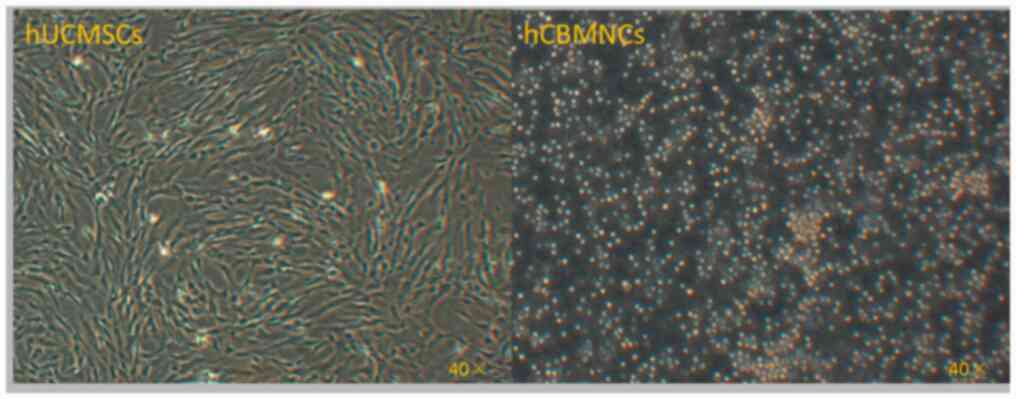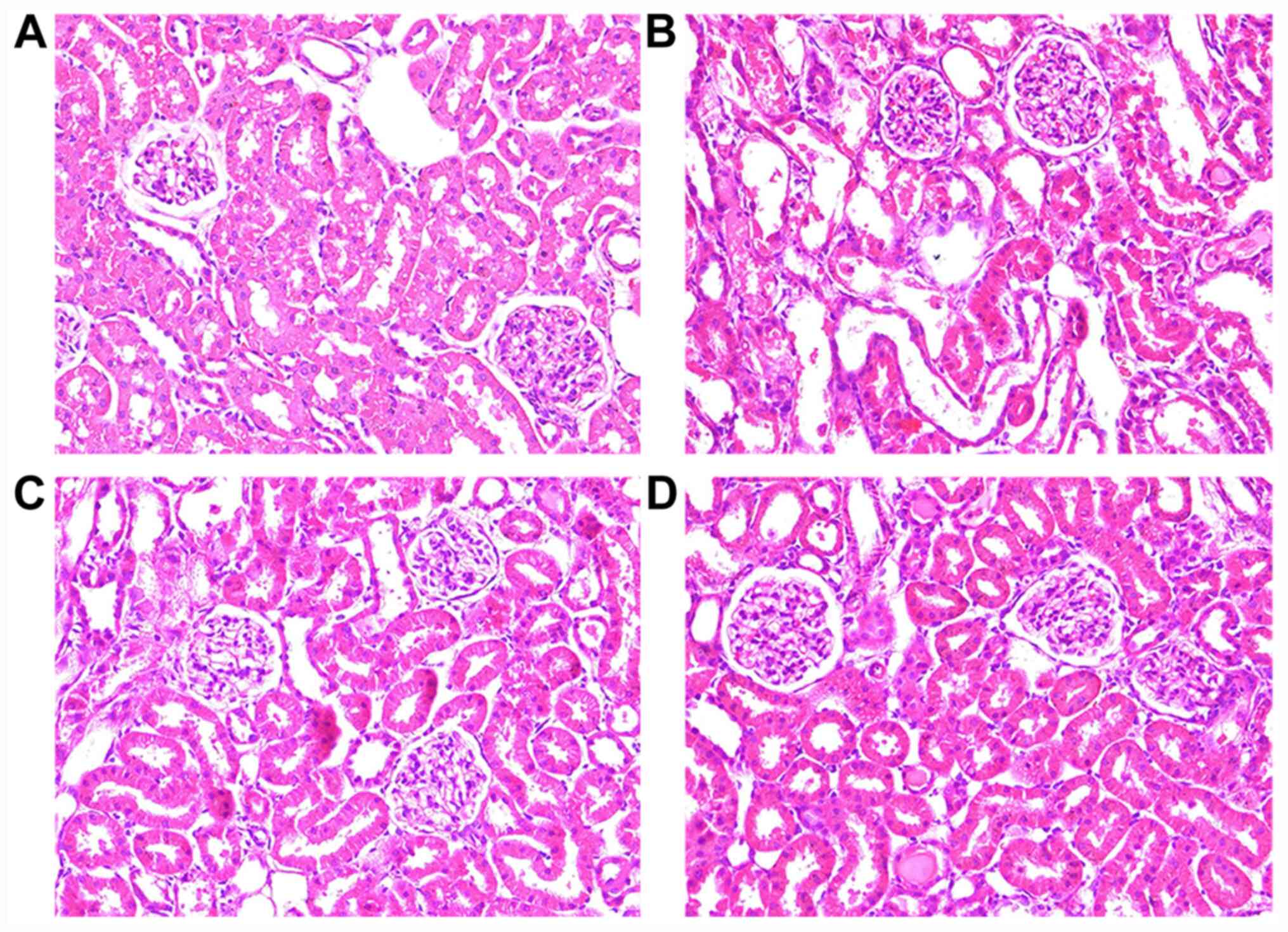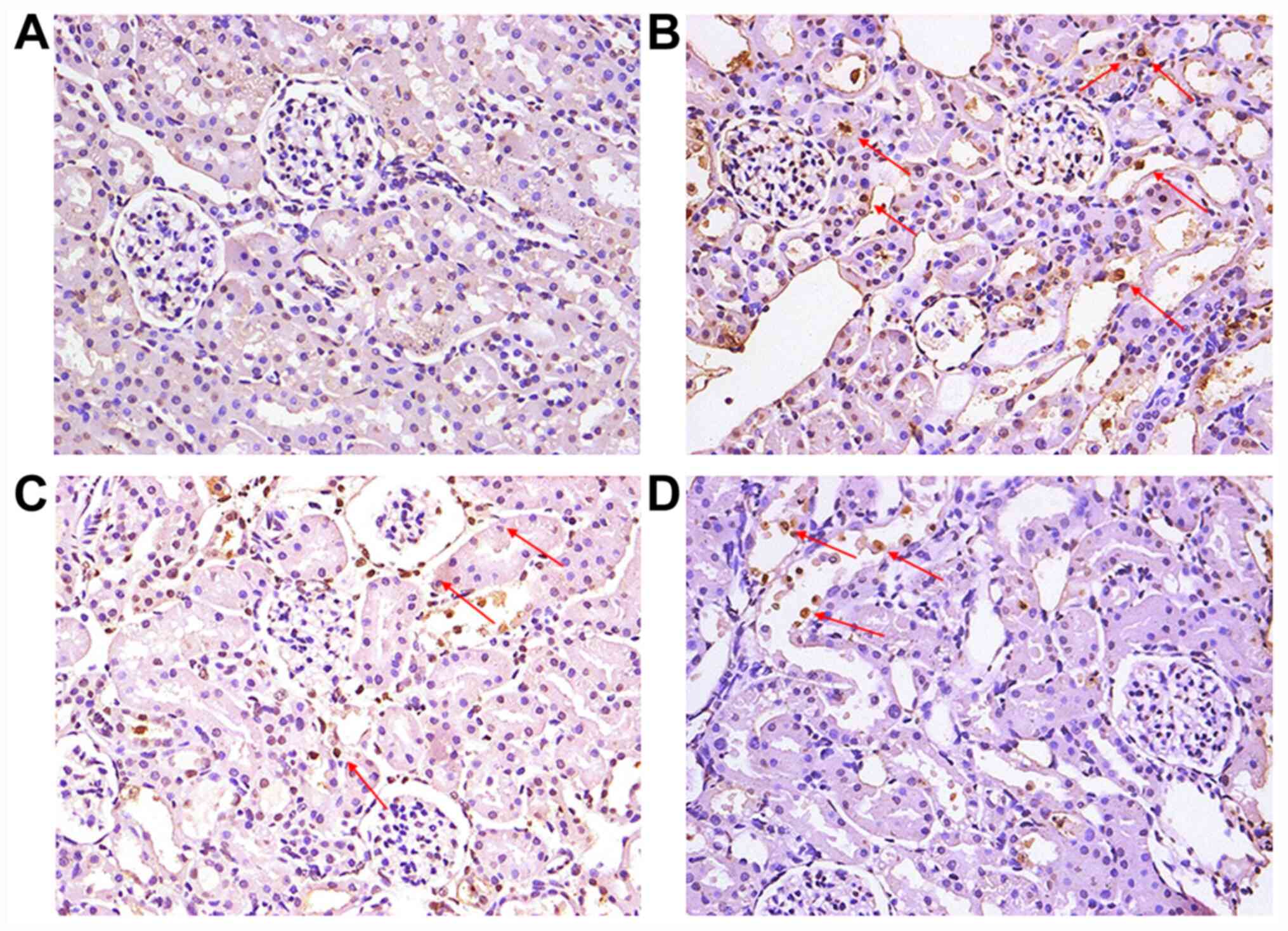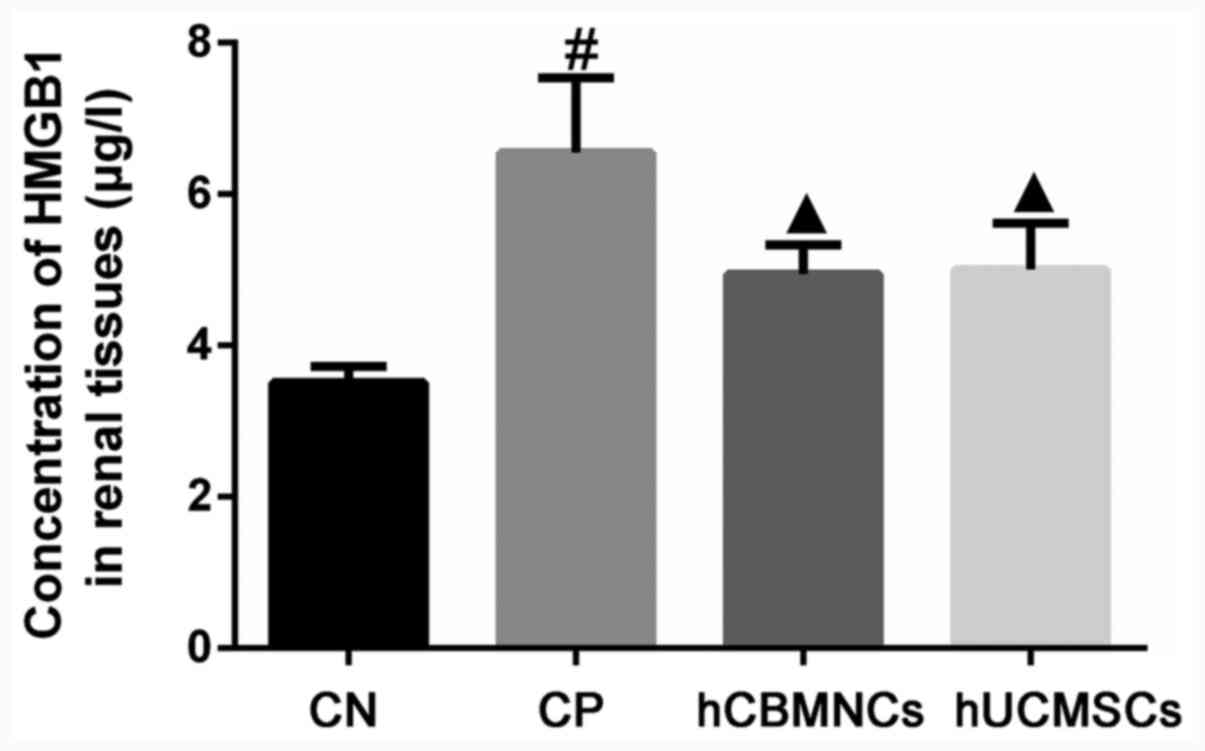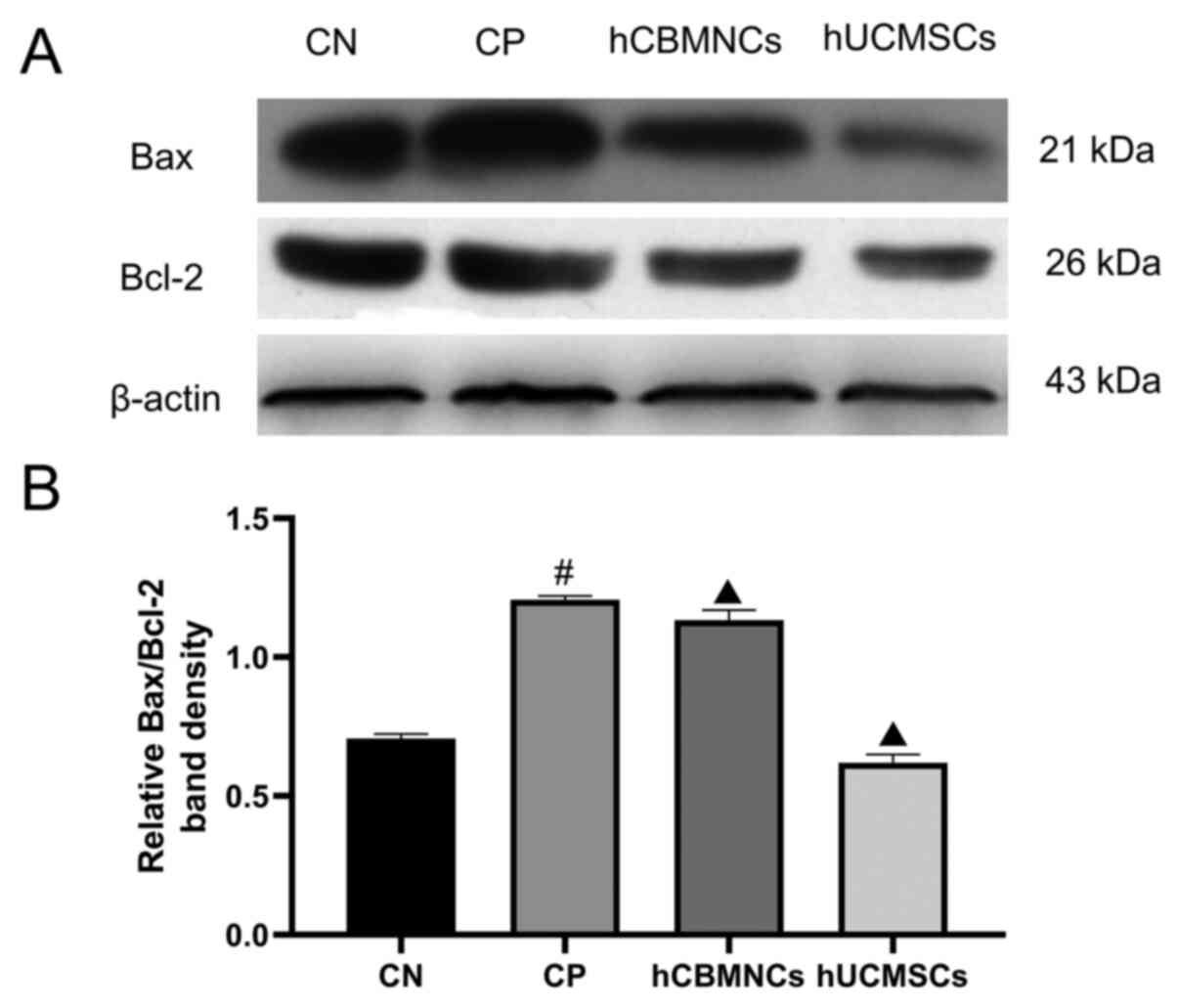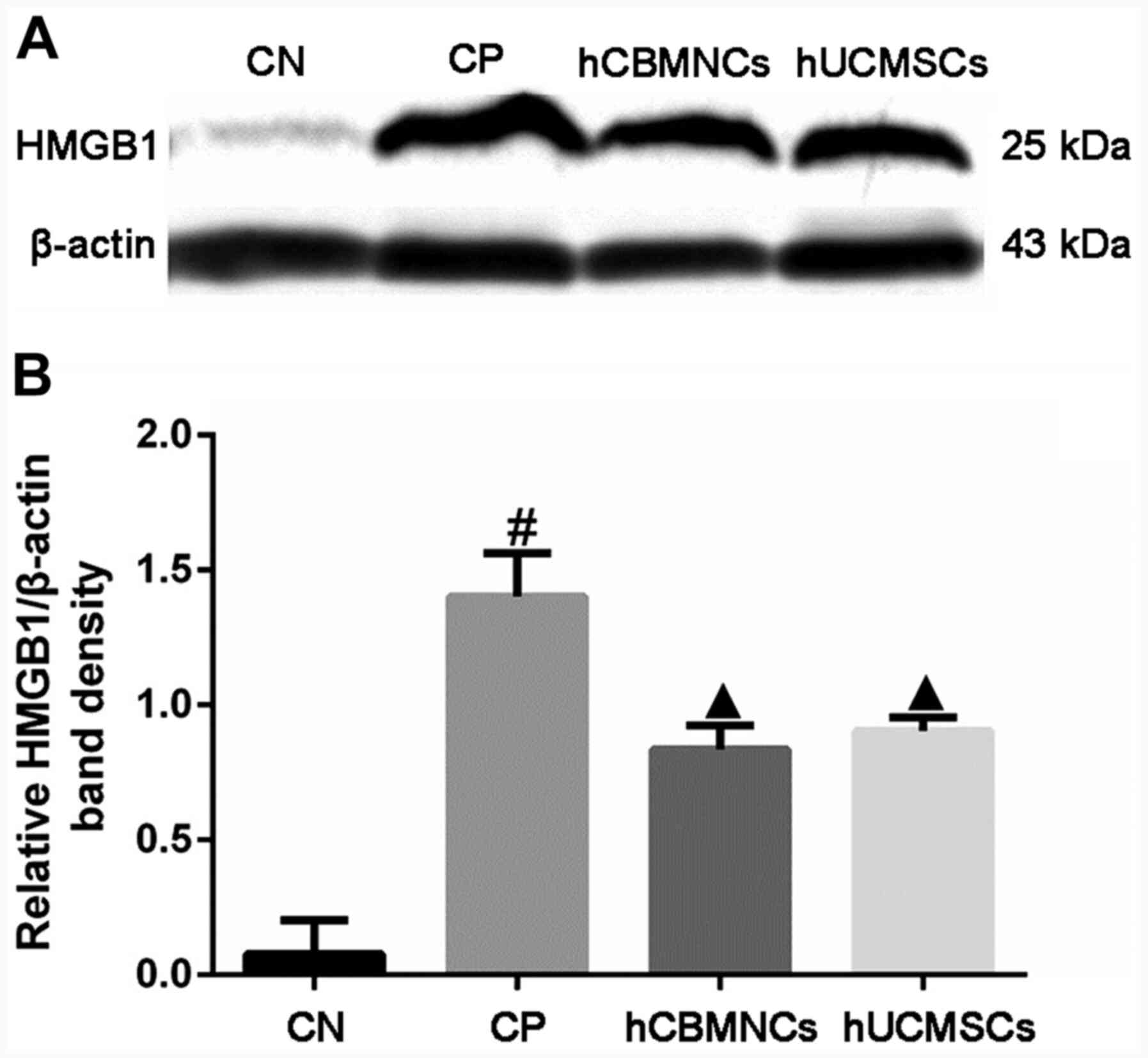|
1
|
Hoste EAJ, Kellum JA, Selby NM, Zarbock A,
Palevsky PM, Bagshaw SM, Goldstein SL, Cerdá J and Chawla LS:
Global epidemiology and outcomes of acute kidney injury. Nat Rev
Nephrol. 14:607–625. 2018.PubMed/NCBI View Article : Google Scholar
|
|
2
|
Susantitaphong P, Cruz DN, Cerda J,
Abulfaraj M, Alqahtani F, Koulouridis I and Jaber BL: Acute Kidney
Injury Advisory Group of the American Society of Nephrology: World
incidence of AKI: A meta-analysis. Clin J Am Soc Nephrol.
8:1482–1493. 2013.PubMed/NCBI View Article : Google Scholar
|
|
3
|
Negi S, Koreeda D, Kobayashi S, Yano T,
Tatsuta K, Mima T, Shigematsu T and Ohya M: Acute kidney injury:
Epidemiology, outcomes, complications, and therapeutic strategies.
Semin Dial. 31:519–527. 2018.PubMed/NCBI View Article : Google Scholar
|
|
4
|
Schiffl H, Lang SM and Fischer R:
Long-term outcomes of survivors of ICU acute kidney injury
requiring renal replacement therapy: A 10-year prospective cohort
study. Clin Kidney J. 5:297–302. 2012.PubMed/NCBI View Article : Google Scholar
|
|
5
|
Case J, Khan S, Khalid R and Khan A:
Epidemiology of acute kidney injury in the intensive care unit.
Crit Care Res Pract. 2013(479730)2013.PubMed/NCBI View Article : Google Scholar
|
|
6
|
Nisula S, Kaukonen KM, Vaara ST, Korhonen
AM, Poukkanen M, Karlsson S, Haapio M, Inkinen O, Parviainen I,
Suojaranta-Ylinen R, et al: Incidence, risk factors and 90-day
mortality of patients with acute kidney injury in finnish intensive
care units: The FINNAKI study. Intensive Care Med. 39:420–428.
2013.PubMed/NCBI View Article : Google Scholar
|
|
7
|
Hoste EA, Bagshaw SM, Bellomo R, Cely CM,
Colman R, Cruz DN, Edipidis K, Forni LG, Gomersall CD, Govil D, et
al: Epidemiology of acute kidney injury in critically ill patients:
The multinational AKI-EPI study. Intensive Care Med. 41:1411–1423.
2015.PubMed/NCBI View Article : Google Scholar
|
|
8
|
Uchino S, Kellum JA, Bellomo R, Doig GS,
Morimatsu H, Morgera S, Schetz M, Tan I, Bouman C, Macedo E, et al:
Acute renal failure in critically ill patients: A multinational,
multicenter study. JAMA. 294:813–818. 2005.PubMed/NCBI View Article : Google Scholar
|
|
9
|
Ozkok A and Edelstein CL: Pathophysiology
of cisplatin-induced acute kidney injury. Biomed Res Int.
2014(967826)2014.PubMed/NCBI View Article : Google Scholar
|
|
10
|
Shiraishi F, Curtis LM, Truong L, Poss K,
Visner GA, Madsen K, Nick HS and Agarwal A: Heme oxygenase-1 gene
ablation or expression modulates cisplatin-induced renal tubular
apoptosis. Am J Physiol Renal Physiol. 278:F726–F736.
2000.PubMed/NCBI View Article : Google Scholar
|
|
11
|
Zhang B, Ramesh G, Uematsu S, Akira S and
Reeves WB: TLR4 signaling mediates inflammation and tissue injury
in nephrotoxicity. J Am Soc Nephrol. 19:923–932. 2008.PubMed/NCBI View Article : Google Scholar
|
|
12
|
Faubel S, Lewis EC, Reznikov L, Ljubanovic
D, Hoke TS, Somerset H, Oh DJ, Lu L, Klein CL, Dinarello CA and
Edelstein CL: Cisplatin-induced acute renal failure is associated
with an increase in the cytokines interleukin (IL)-1beta, IL-18,
IL-6, and neutrophil infiltration in the kidney. J Pharmacol Exp
Ther. 322:8–15. 2007.PubMed/NCBI View Article : Google Scholar
|
|
13
|
Deng J, Kohda Y, Chiao H, Wang Y, Hu X,
Hewitt SM, Miyaji T, McLeroy P, Nibhanupudy B, Li S and Star RA:
Interleukin-10 inhibits ischemic and cisplatin-induced acute renal
injury. Kidney Int. 60:2118–2128. 2001.PubMed/NCBI View Article : Google Scholar
|
|
14
|
Ni J, Hou X, Wang X, Shi Y, Xu L, Zheng X,
Liu N, Qiu A and Zhuang S: 3-deazaneplanocin A protects against
cisplatin-induced renal tubular cell apoptosis and acute kidney
injury by restoration of E-cadherin expression. Cell Death Dis.
10(355)2019.PubMed/NCBI View Article : Google Scholar
|
|
15
|
Lu QB, Du Q, Wang HP, Tang ZH, Wang YB and
Sun HJ: Salusin-β mediates tubular cell apoptosis in acute kidney
injury: Involvement of the PKC/ROS signaling pathway. Redox Biol.
30(101411)2020.PubMed/NCBI View Article : Google Scholar
|
|
16
|
Scaffidi P, Misteli T and Bianchi ME:
Release of chromatin protein HMGB1 by necrotic cells triggers
inflammation. Nature. 418:191–195. 2002.PubMed/NCBI View Article : Google Scholar
|
|
17
|
Wu H, Ma J, Wang P, Corpuz TM,
Panchapakesan U, Wyburn KR and Chadban SJ: HMGB1 contributes to
kidney ischemia reperfusion injury. J Am Soc Nephrol. 21:1878–1890.
2010.PubMed/NCBI View Article : Google Scholar
|
|
18
|
Doi K, Ishizu T, Tsukamoto-Sumida M,
Hiruma T, Yamashita T, Ogasawara E, Hamasaki Y, Yahagi N, Nangaku M
and Noiri E: The high-mobility group protein B1-Toll-like receptor
4 pathway contributes to the acute lung injury induced by bilateral
nephrectomy. Kidney Int. 86:316–326. 2014.PubMed/NCBI View Article : Google Scholar
|
|
19
|
Ruan Y, Wang L, Zhao Y, Yao Y, Chen S, Li
J, Guo H, Ming C, Chen S, Gong F and Chen G: Carbon monoxide
potently prevents ischemia-induced high-mobility group box 1
translocation and release and protects against lethal renal
ischemia-reperfusion injury. Kidney Int. 86:525–537.
2014.PubMed/NCBI View Article : Google Scholar
|
|
20
|
Kim J: Poly(ADP-ribose) polymerase
activation induces high mobility group box 1 release from proximal
tubular cells during cisplatin nephrotoxicity. Physiol Res.
65:333–340. 2016.PubMed/NCBI View Article : Google Scholar
|
|
21
|
Zhu F, Chong Lee Shin OL, Xu H, Zhao Z,
Pei G, Hu Z, Yang J, Guo Y, Mou J, Sun J, et al: Melatonin promoted
renal regeneration in folic acid-induced acute kidney injury via
inhibiting nucleocytoplasmic translocation of HMGB1 in tubular
epithelial cells. Am J Transl Res. 9:1694–1707. 2017.PubMed/NCBI
|
|
22
|
Leelahavanichkul A, Huang Y, Hu X, Zhou H,
Tsuji T, Chen R, Kopp JB, Schnermann J, Yuen PST and Star RA:
Chronic kidney disease worsens sepsis and sepsis-induced acute
kidney injury by releasing high mobility group box protein-1.
Kidney Int. 80:1198–1211. 2011.PubMed/NCBI View Article : Google Scholar
|
|
23
|
Wei Q, Dong G, Franklin J and Dong Z: The
pathological role of Bax in cisplatin nephrotoxicity. Kidney Int.
72:53–62. 2007.PubMed/NCBI View Article : Google Scholar
|
|
24
|
Cho HJ, Kim JK, Kim KD, Yoon HK, Cho MY,
Park YP, Jeon JH, Lee ES, Byun SS, Lim HM, et al: Upregulation of
Bcl-2 is associated with cisplatin-resistance via inhibition of Bax
translocation in human bladder cancer cells. Cancer Lett.
237:56–66. 2006.PubMed/NCBI View Article : Google Scholar
|
|
25
|
Nagothu KK, Bhatt R, Kaushal GP and
Portilla D: Fibrate prevents cisplatin-induced proximal tubule cell
death. Kidney Int. 68:2680–2693. 2005.PubMed/NCBI View Article : Google Scholar
|
|
26
|
Morigi M, Rota C, Montemurro T,
Montelatici E, Cicero VL, Imberti B, Abbate M, Zoja C, Cassis P,
Longaretti L, et al: Life-sparing effect of human cord
blood-mesenchymal stem cells in experimental acute kidney injury.
Stem Cells. 28:513–522. 2010.PubMed/NCBI View
Article : Google Scholar
|
|
27
|
Peired AJ, Sisti A and Romagnani P:
Mesenchymal stem cell-based therapy for kidney disease: A review of
clinical evidence. Stem Cells Int. 2016(4798639)2016.PubMed/NCBI View Article : Google Scholar
|
|
28
|
Jiao X, Cai J, Yu X and Ding X: Paracrine
activation of the wnt/β-catenin pathway by bone marrow stem cell
attenuates cisplatin-induced kidney injury. Cell Physiol Biochem.
44:1980–1994. 2017.PubMed/NCBI View Article : Google Scholar
|
|
29
|
Fang TC and Poulsom R: Cell-based
therapies for birth defects: A role for adult stem cell plasticity?
Birth Defects Res C Embryo Today. 69:238–249. 2003.PubMed/NCBI View Article : Google Scholar
|
|
30
|
El-Ashmawy NE, Khedr EG, El-Bahrawy HA and
El-Berashy SA: Effect of human umbilical cord blood-derived
mononuclear cells on diabetic nephropathy in rats. Biomed
Pharmacother. 97:1040–1045. 2018.PubMed/NCBI View Article : Google Scholar
|
|
31
|
Pimentel-Coelho PM, Rosado-de-Castro PH,
da Fonseca LM and Mendez-Otero R: Umbilical cord blood mononuclear
cell transplantation for neonatal hypoxic-ischemic encephalopathy.
Pediatr Res. 71:464–473. 2012.PubMed/NCBI View Article : Google Scholar
|
|
32
|
Cui X, Chen L, Xue T, Yu J, Liu J, Ji Y
and Cheng L: Human umbilical cord and dental pulp-derived
mesenchymal stem cells: Biological characteristics and potential
roles in vitro and in vivo. Mol Med Rep. 11:3269–3278.
2015.PubMed/NCBI View Article : Google Scholar
|
|
33
|
Pittenger MF, Mackay AM, Beck SC, Jaiswal
RK, Douglas R, Mosca JD, Moorman MA, Simonetti DW, Craig S and
Marshak DR: Multilineage potential of adult human mesenchymal stem
cells. Science. 284:143–147. 1999.PubMed/NCBI View Article : Google Scholar
|
|
34
|
Rubinstein P, Dobrila L, Rosenfield RE,
Adamson JW, Migliaccio G, Migliaccio AR, Taylor PE and Stevens CE:
Processing and cryopreservation of placental/umbilical cord blood
for unrelated bone marrow reconstitution. Proc Natl Acad Sci USA.
92:10119–10122. 1995.PubMed/NCBI View Article : Google Scholar
|
|
35
|
Seo Y, Yang SR, Jee MK, Joo EK, Roh KH,
Seo MS, Han TH, Lee SY, Ryu PD, Jung JW, et al: Human umbilical
cord blood-derived mesenchymal stem cells protect against neuronal
cell death and ameliorate motor deficits in Niemann Pick type C1
mice. Cell Transplant. 20:1033–1047. 2011.PubMed/NCBI View Article : Google Scholar
|
|
36
|
Duan SB, Liu GL, Chen GC, Wang P, Pan P
and Xu XQ: Aged rats are susceptible to nephrotoxicity induced by
iodinated contrast media. Ren Fail. 35:150–154. 2013.PubMed/NCBI View Article : Google Scholar
|
|
37
|
Schetza M, Dastab J, Goldsteinc S and
Golperd T: Drug-induced acute kidney injury. Curr Opin Crit Care.
11:555–565. 2005.PubMed/NCBI View Article : Google Scholar
|
|
38
|
Launay-Vacher V, Rey JB, Isnard-Bagnis C,
Deray G and Daouphars M: European Society of Clinical Pharmacy
Special Interest Group on Cancer Care: Prevention of cisplatin
nephrotoxicity: State of the art and recommendations from the
european society of clinical pharmacy special interest group on
cancer care. Cancer Chemother Pharmacol. 61:903–909.
2008.PubMed/NCBI View Article : Google Scholar
|
|
39
|
Perazella MA and Moeckel GW:
Nephrotoxicity from chemotherapeutic agents: Clinical
manifestations, pathobiology, and prevention/therapy. Semin
Nephrol. 30:570–581. 2010.PubMed/NCBI View Article : Google Scholar
|
|
40
|
Freitag J, Bates D, Boyd R, Shah K,
Barnard A, Huguenin L and Tenen A: Mesenchymal stem cell therapy in
the treatment of osteoarthritis: Reparative pathways, safety and
efficacy-a review. BMC Musculoskelet Disord. 17(230)2016.PubMed/NCBI View Article : Google Scholar
|
|
41
|
Eom YW, Shim KY and Baik SK: Mesenchymal
stem cell therapy for liver fibrosis. Korean J Intern Med.
30:580–589. 2015.PubMed/NCBI View Article : Google Scholar
|
|
42
|
Bagno L, Hatzistergos KE, Balkan W and
Hare JM: Mesenchymal stem cell-based therapy for cardiovascular
disease: Progress and challenges. Mol Ther. 26:1610–1623.
2018.PubMed/NCBI View Article : Google Scholar
|
|
43
|
Mendt M, Rezvani K and Shpall E:
Mesenchymal stem cell-derived exosomes for clinical use. Bone
Marrow Transplant. 54 (Suppl 2):S789–S792. 2019.PubMed/NCBI View Article : Google Scholar
|
|
44
|
Morigi M, Imberti B, Zoja C, Corna D,
Tomasoni S, Abbate M, Rottoli D, Angioletti S, Benigni A, Perico N,
et al: Mesenchymal stem cells are renotropic, helping to repair the
kidney and improve function in acute renal failure. J Am Soc
Nephrol. 15:1794–1804. 2004.PubMed/NCBI View Article : Google Scholar
|
|
45
|
Eliopoulos N, Zhao J, Forner K, Birman E,
Young YK and Bouchentouf M: Erythropoietin gene-enhanced marrow
mesenchymal stromal cells decrease cisplatin-induced kidney injury
and improve survival of allogeneic mice. Mol Ther. 19:2072–2083.
2011.PubMed/NCBI View Article : Google Scholar
|
|
46
|
Park JH, Jang HR, Kim DH, Kwon GY, Lee JE,
Huh W, Choi SJ, Oh W, Oh HY and Kim YG: Early, but not late,
treatment with human umbilical cord blood-derived mesenchymal stem
cells attenuates cisplatin nephrotoxicity through immunomodulation.
Am J Physiol Renal Physiol. 313:F984–F996. 2017.PubMed/NCBI View Article : Google Scholar
|
|
47
|
Lee RH, Song JM, Park MY, Kang SK, Kim YK
and Jung JS: Cisplatin-induced apoptosis by translocation of
endogenous Bax in mouse collecting duct cells. Biochem Pharmacol.
62:1013–1023. 2001.PubMed/NCBI View Article : Google Scholar
|
|
48
|
Phinney DG and Prockop DJ: Concise review:
Mesenchymal stem/multipotent stromal cells: The state of
transdifferentiation and modes of tissue repair-current views. Stem
Cells. 25:2896–2902. 2007.PubMed/NCBI View Article : Google Scholar
|
|
49
|
Herrera MB, Bussolati B, Bruno S, Fonsato
V, Romanazzi GM and Camussi G: Mesenchymal stem cells contribute to
the renal repair of acute tubular epithelial injury. Int J Mol Med.
14:1035–1041. 2004.PubMed/NCBI
|
|
50
|
Tögel F, Weiss K, Yang Y, Hu ZM, Zhang P
and Westenfelder C: Vasculotropic, paracrine actions of infused
mesenchymal stem cells are important to the recovery from acute
kidney injury. Am J Physiol Renal Physiol. 292:F1626–F1635.
2007.PubMed/NCBI View Article : Google Scholar
|
|
51
|
Tögel F, Zhang P, Hu ZM and Westenfelder
C: VEGF is a mediator of the renoprotective effects of multipotent
marrow stromal cells in acute kidney injury. J Cell Mol Med.
13:2109–2114. 2009.PubMed/NCBI View Article : Google Scholar
|
|
52
|
Zhou Y, Xu H, Xu W, Wang B, Wu H, Tao Y,
Zhang B, Wang M, Mao F, Yan Y, et al: Exosomes released by human
umbilical cord mesenchymal stem cells protect against
cisplatin-induced renal oxidative stress and apoptosis in vivo and
in vitro. Stem Cell Res Ther. 4(34)2013.PubMed/NCBI View Article : Google Scholar
|
|
53
|
Zhang G, Zou X, Huang Y, Wang F, Miao S,
Liu G, Chen M and Zhu Y: Mesenchymal stromal cell-derived
extracellular vesicles protect against acute kidney injury through
anti-oxidation by enhancing Nrf2/ARE activation in rats. Kidney
Blood Press Res. 41:119–128. 2016.PubMed/NCBI View Article : Google Scholar
|















